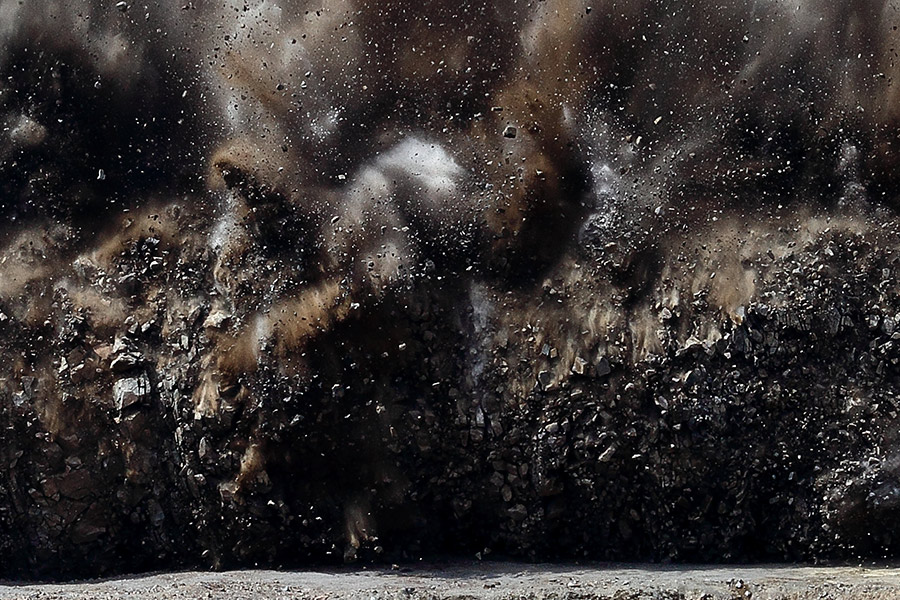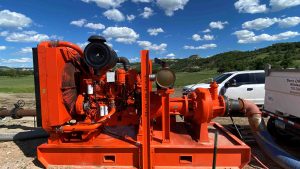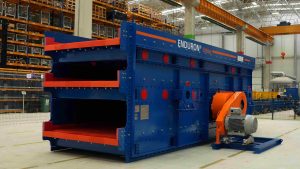That the quarrying sector has been slow to embrace new technologies is no overstatement. However, Tinus Brits, BME’s global product manager – AXXIS, believes that there is a shift in attitude, especially in blasting, where electronic detonation systems are fast becoming an integral part of quarrying processes.
With all the easy rock already mined out and blasting becoming more difficult by the day, Brits says quarries are turning to electronic systems as improvements in blast outcomes, mining efficiencies, environmental impact control and safety are realised.
“Quarries have reached the point where mining has become more difficult, yet as equipment and energy costs keep rising and stricter environmental and safety regulations must be complied with, and, additionally, industry demands even more stringent product specifications,” explains Brits, “there is a better understanding that electronic blast systems take safety, fragmentation, environmental control and blast efficiency to a whole new level.”
Traditionally, adds Brits, the take-up of electronic detonation systems has been relatively slow in the quarrying industry. Understandably, the cost of this technology compared with conventional nonelectric delay detonators has always been a major barrier for the industry.
With that in mind, BME has brought to market the AXXIS Silver system, a slimmed-down version of its flagship AXXIS Titanium range, specifically designed for quarries and other smaller mines. The AXXIS Silver is a cost-effective solution for operations with less demanding blasting needs. It will help free quarries from the limitations of conventional nonelectric solutions and allow them to experience the benefits of electronic initiation.
Bennie van Nieuwenhuizen, BME’s AXXIS quality manager, says there has been a quick take-up of Silver in the quarrying industry following its introduction late last year. Several leading quarrying groups, he says, have already converted from the previous AXXIS GII system to the new AXXIS Silver. About 15% of the existing users of the GII system have already migrated to the new electronic initiation system.
“Overall, there has been a steady annual conversion rate of quarries from non-electric to electric detonators of about 12-14%,” says Van Nieuwenhuizen. “Within the next five years, it is likely that the majority of quarries will have migrated to electronics.”
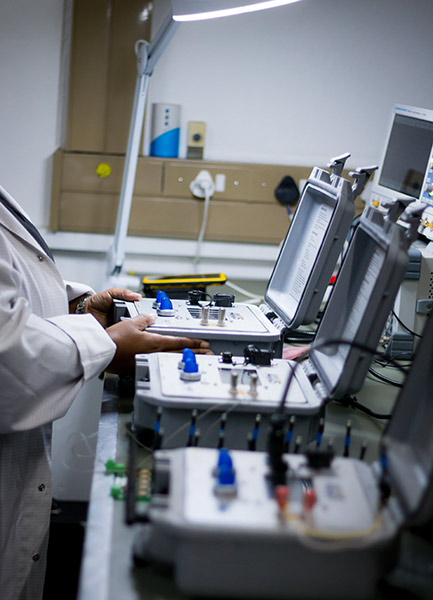
Efficiency gains
Efficiency in quarrying is the difference between profitability and stagnation. According to Brits, blasting has a substantial economic effect on quarrying and mining projects at large. A poor blast result means sub-optimal fragmentation, thus slowing the entire downstream processes, from loading through to crushing.
Meanwhile, secondary blasting or breaking of oversized material could be as much as four times the cost of the initial blast. Based on that understanding, BME had a specific focus on efficiency when developing the AXXIS Silver system. While it is a scaled-down version of the flagship Titanium, the system retains the same efficiency gains for which the Titanium is renowned.
“While the AXXIS Titanium allows for large blasts of up to 20 000 detonators, the AXXIS Silver system is designed for up to 1 600 detonators – 800 per blast box, which is more than enough for the quarrying industry’s blasting requirements,” says Brits.
The accuracy of detonation delays has been enhanced, reaching 0,0067% firing accuracy for consistent quality blasting that results in optimal rock fragmentation and consistency. The programmability of 15 seconds with 1-millisecond intervals allows for blast designs to be precision-designed, resulting in better fragmentation.
The AXXIS Silver initiation system integrates with BME’s Blast Alliance suite of digital tools, including its BLASTMAP blast planning software, XPLOLOG data logger and online dashboard, and the Blasting Guide App for Android devices. This allows customised solutions that can be implemented with speed, accuracy and safety, says Van Nieuwenhuizen.
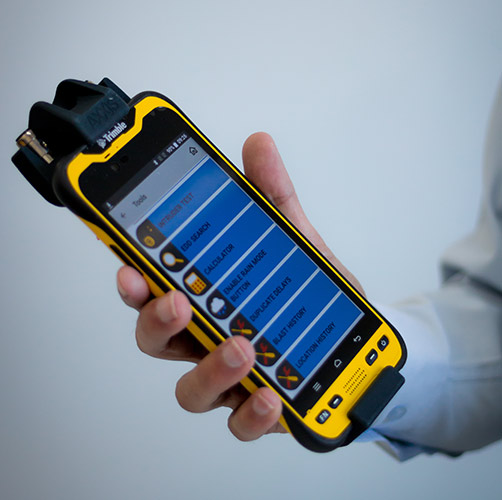
Safe blasting
The AXXIS Silver system retains all the stringent safety features that have made AXXIS Titanium popular, including an application-specific integrated circuit (ASIC) chip in the BME detonators. Among the added benefits of the ASIC is more internal safety gates against stray current and lightning – which enhances safety levels and allows for inherently safe logging and testing.
The ASIC chip also boasts more memory and processing speed, facilitating easier timing and centralised programming if the timing needs to be changed after being conducted on the bench.
“During the development of the AXXIS Silver system, we paid particular attention to safety,” says Van Nieuwenhuizen. “One of the unique features is the key logger, a hand-held device for logging and testing of the detonators. It is the only control device that allows the blast to be fired, thus giving the overall control to the blaster. It controls the entire process, from testing through to detonation and charging of capacitors.”
The ease of use and on-bench logging, adds Van Nieuwenhuizen, is another key benefit of the key logger. The one-step logging and testing of detonators, as well as the simple fault-finding and quick corrections on the blast pattern, are said to be ground-breaking. Everything is built into the logger, which can now do the programming, scanning and testing.
Another key safety feature is the use of dual capacitors and dual voltage, allowing for low voltage logging to avoid unplanned detonation. The dual capacitors split the system into two. The logic capacitor is used to communicate and test the detonator and does not have enough energy to fire the fuse head. The firing capacitor is only used for firing.
“This is aimed at creating a separate line of communication for safe logging and testing of the detonator. Most other detonator systems in the market only use a single basis of safety,” says Brits.
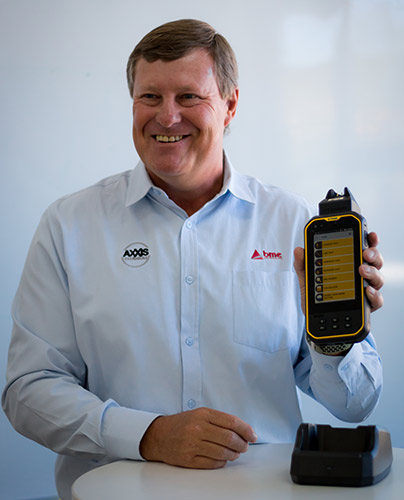
Additional benefits
“There are also specific advantages for quarries that we have built into the AXXIS Silver, such as the thinner 30 m copper-cladded steel cable which we have developed to suit small diameter waterlogged blastholes,” says Van Nieuwenhuizen. “This results in a perfectly straight wire down the hole, so the blaster knows exactly where the booster is – without compromising on the line strength.”
In conclusion, Brits says the flexibility and accuracy of the AXXIS Silver electronic blast initiation system minimise airblast and vibration levels. Ground vibration, flyrock and airblast are critical issues for quarry operators.
“Quarries by their nature are located close to communities and existing infrastructure. Adhering to local ground vibration and airblast limits is therefore critical to maintain their licence to operate. With the AXXIS Silver system, they can be comfortable knowing that issues such as flyrock and excessive vibration can be controlled,” concludes Brits.
